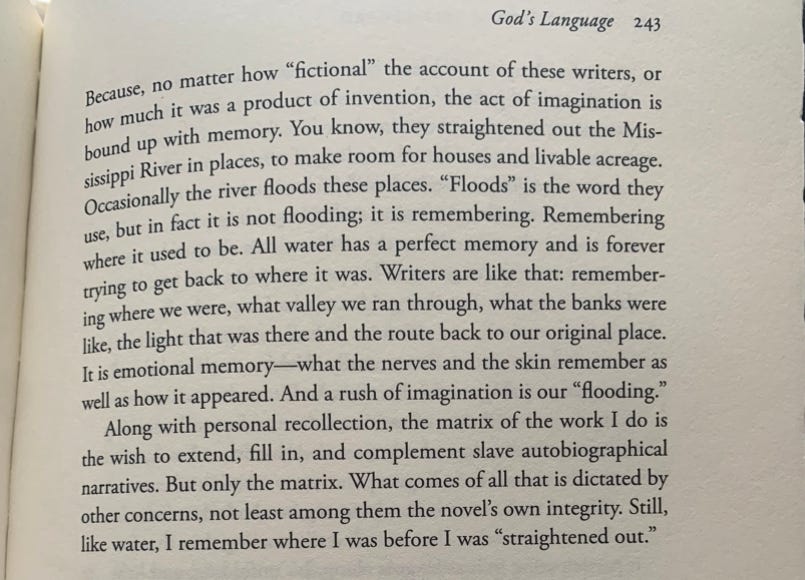An Exploration of Land & Other Ways of Knowing approximately 1907 in North Carolina
📸: “African American baptism in New Bern, N.C.,” approximately 1907, New Bern, N.C., Copyright 1907 by Bayard Wootten; Verso: Post Card, Emory University, Stuart A. Rose Manuscript, Archives, and Rare Book Library
Mirror Moment: Land & Other ways of knowing
For this week’s post, water is still the primary theme on my mind in this archival image. Bayard Wootten took this photograph and it was originally displayed on a postcard. I am intrigued by the placement of hands and arms. Some people in this photograph’s arms are up, most likely in praise/surrender, while others’ hands are flanking their bodies. Then, there are the people whose hands are clasped in front of them looking toward the right. Clasping seems to be in opposition to the surrender required in order to work with the water and surrender spiritually. However, I gather the clasping is more about appearance, respect, and decorum while wading in water in all white.
Toni Morrison wrote in her essay “The Site of Memory” that “all water has perfect memory and is forever trying to get back to where it was.”
I think about this quote whenever I look at water, and in this image with people in all white it brings to mind Julie Dash’s “Daughters of the Dust.”
Dash’s film explores a Gullah family debating about going to the mainland or staying on the sea island off the coast of South Carolina. In this clip, Bilal (one of the last to come to the island on a slave ship) refutes the story that their ancestors walked across the water once they knew they would be held captive. Instead, Bilal believes they fully surrendered to the water and never came back up. Members of the family in Dash’s film, like Morrison, remember where they were before they were “straightened out.”





